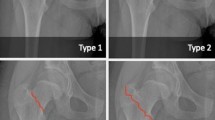Abstract
Fractured neck of femur in elderly is associated with mortality which is reported in literature to vary between 20 and 40%. One of the factors which is suggested to be a risk factor is male sex. We reviewed 83 male necks of femur patients admitted over a period of a year to assess the patient’s physical status, influence of co-morbidities, postoperative course and mortality. The in-hospital mortality was 26.5% and 1-year mortality was 44.6%. The in-hospital mortality for female neck of femur patients during the same period was 18%. Increasing age, high ASA category and post-operative chest infections were associated with high peri-operative mortality, and fall sustained in an acute hospital ward was associated with high 1-year mortality in addition to ASA grade and chest infection. Patients who had a chest infection in the post-operative period had in-hospital mortality of 46.2% (P value 0.006) and a 1-year mortality of 73.1% (P value 0.001). Patients who fell in the ward as inpatients under geriatric care had 60% mortality.
Similar content being viewed by others
References
Aharonoff GB, Koval KJ, Skovron ML, Zuckerman JD (1997) Hip fractures in the elderly: predictors of one year mortality. J Orthop Trauma 11(3):162–165
Barlow AP, Zarifa Z, Shillito RG, Crumplin MK, Edwards E, McCarthy JM (1989) Surgery in a geriatric population. Ann R Coll Surg Engl 71(2):110–114
Beringer TR, Crawford VL, Brown JG (1996) Audit of surgical delay in relationship to outcome after proximal femoral fracture. Ulster Med J 65(1):32–38
Dzupa V, Bartonicek J, Skala-Rosenbaum J, Prikazsky V (2002) Mortality in patients with proximal femoral fractures during the first year after the injury. Acta Chir Orthop Traumatol Cech 69(1):39–44
Hamlet WP, Lieberman JR, Freedman EL, Dorey FJ, Fletcher A, Johnson EE (1997) Influence of health status and the timing of surgery on mortality in hip fracture patients. Am J Orthop 26(9):621–627
Huuskonen J, Kroger H, Arnala I, Alhava E (1999) Characteristics of male hip fracture patients. Ann Chir Gynaecol 88(1):48–53
Kannus P, Parkkari J, Sievanen H, Heinonen A, Vuori I, Jarvinen M (1996) Epidemiology of hip fractures. Bone 18(1 Suppl):57S–63S
Lubin MF (1993) Is age a risk factor for surgery? Med Clin North Am 77(2):327–333
Oliver CW, Burke C (2004) Hip fractures in centenarians. Injury 35(10):1025–1030
Ooi LH, Wong TH, Toh CL, Wong HP (2005) Hip fractures in nonagenarians—a study on operative and non-operative management. Injury 36(1):142–147
Parker MJ, Lewis SJ, Mountain J, Christie J, Currie CT (2002) Hip fracture rehabilitation—a comparison of two centres. Injury 33(1):7–11
Parker MJ, Pryor GA (1992) The timing of surgery for proximal femoral fractures. J Bone Joint Surg Br 74(2):203–205
Seeman E (2001) Unresolved issues in osteoporosis in men. Rev Endocr Metab Disord. 2(1):45–64
Svensson O, Stromberg L, Ohlen G, Lindgren U (1996) Prediction of the outcome after hip fracture in elderly patients. J Bone Joint Surg Br 78(1):115–118
Trombetti A, Herrmann F, Hoffmeyer P, Schurch MA, Bonjour JP, Rizzoli R (2002) Survival and potential years of life lost after hip fracture in men and age-matched women. Osteoporos Int 13(9):731–737
Van Balen R, Steyerberg EW, Polder JJ, Ribbers TL, Habbema JD, Cools HJ (2001) Hip fracture in elderly patients: outcomes for function, quality of life, and type of residence. Clin Orthop Relat Res 390:232–243
White BL, Fisher WD, Laurin CA (1987) Rate of mortality for elderly patients after fracture of the hip in the 1980’s. J Bone Joint Surg Am 69(9):1335–1340
Wood DJ, Ions GK, Quinby JM, Gale DW, Stevens J (1992) Factors which influence mortality after subcapital hip fracture. J Bone Joint Surg Br 74(2):199–202
Acknowledgements
We acknowledge the cooperation and help extended by the medical records department of the Southampton University Hospitals Trust. We confirm that this study confirms to the current laws in United Kingdom.
Author information
Authors and Affiliations
Corresponding author
Rights and permissions
About this article
Cite this article
Kurup, H., Mehta, R. The male neck of femur. Arch Orthop Trauma Surg 126, 181–183 (2006). https://doi.org/10.1007/s00402-006-0121-x
Received:
Published:
Issue Date:
DOI: https://doi.org/10.1007/s00402-006-0121-x




